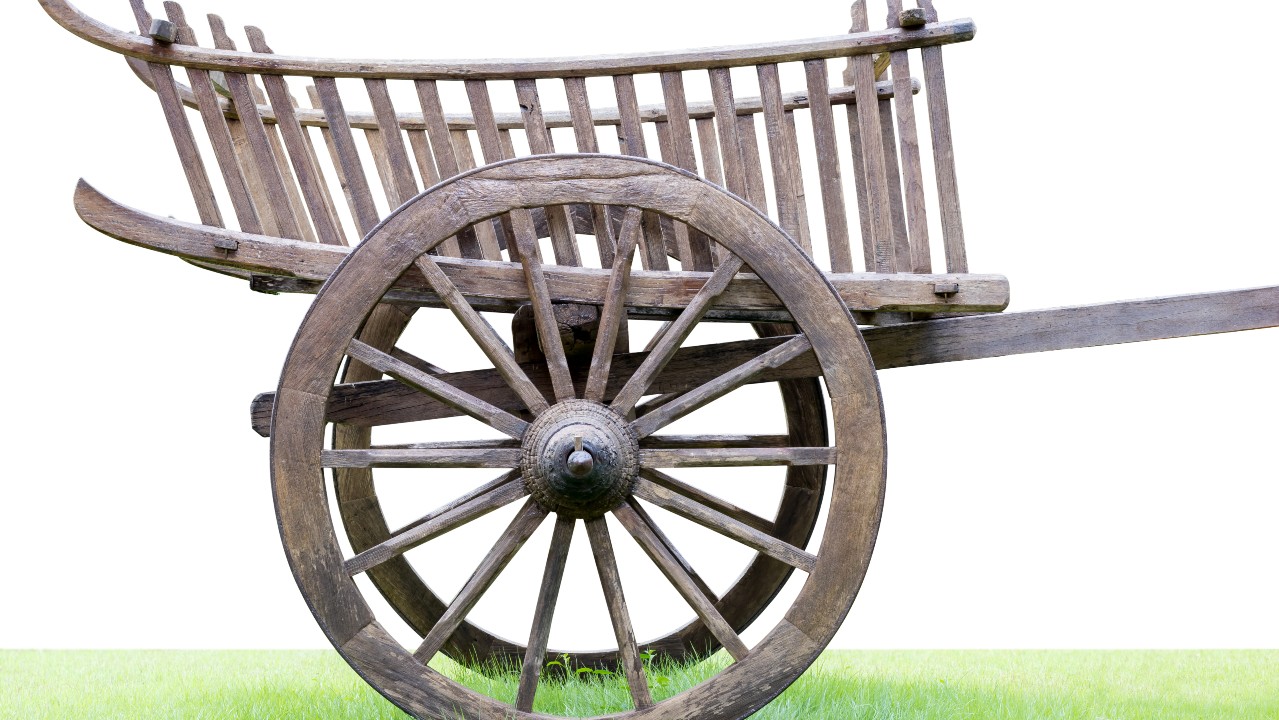Easy Quick Modeling Flat Ground With Movable Objects
6 simple machines: Making work easier

Throughout history, humans have developed several simple machines to make work easier. The most notable of these are known as the "six simple machines": the wheel and axle, the lever, the inclined plane, the pulley, the screw, and the wedge, although the latter three are actually just extensions or combinations of the first three, according to Encyclopedia Britannica (opens in new tab).
Because work is defined as force acting on an object in the direction of motion, a machine makes work easier to perform by accomplishing one or more of the following functions, according to Boston University (opens in new tab):
- transferring a force from one place to another,
- changing the direction of a force,
- increasing the magnitude of a force, or
- increasing the distance or speed of a force.
Simple machines are devices with no, or very few, moving parts that make work easier. Many of today's complex tools are just combinations or more complicated forms of the six simple machines, according to the University of Colorado at Boulder (opens in new tab). For instance, we might attach a long handle to a shaft to make a windlass, or use a block and tackle to pull a load up a ramp. While these machines may seem simple, they continue to provide us with the means to do many things that we could never do without them.
Wheel and axle

The wheel is considered to be one of the most significant inventions in the history of the world. "Before the invention of the wheel in 3500 B.C., humans were severely limited in how much stuff we could transport over land, and how far," as Live Science has previously reported. Wheeled carts facilitated agriculture and commerce by enabling the transportation of goods to and from markets, as well as easing the burdens of people traveling great distances,
The wheel greatly reduces the friction encountered when an object is moved over a surface. "If you put your file cabinet on a small cart with wheels, you can greatly reduce the force you need to apply to move the cabinet with constant speed," according to the University of Tennessee.
In his book "Ancient Science: Prehistory-A.D. 500 (opens in new tab)" , Charlie Samuels writes, "In parts of the world, heavy objects such as rocks and boats were moved using log rollers. As the object moved forward, rollers were taken from behind and replaced in front." This was the first step in the development of the wheel.
The great innovation, though, was in mounting a wheel on an axle. The wheel could be attached to an axle that was supported by a bearing, or it could be made to turn freely about the axle. This led to the development of carts, wagons and chariots. According to Samuels, archaeologists use the development of a wheel that rotates on an axle as an indicator of a relatively advanced civilization. The earliest evidence of wheels on axles is from about 3200 B.C. by the Sumerians. The Chinese independently invented the wheel in 2800 B.C.
In addition to reducing friction, a wheel and axle can also serve as a force multiplier. If a wheel is attached to an axle, and a force is used to turn the wheel, the rotational force, or torque, on the axle is much greater than the force applied to the rim of the wheel. Alternatively, a long handle can be attached to the axle to achieve a similar effect.
The other five machines all help humans increase and/or redirect the force applied to an object. In their book "Moving Big Things (opens in new tab) ," Janet L. Kolodner and her co-authors write, "Machines provide mechanical advantage to assist in moving objects. Mechanical advantage is the trade-off between force and distance." In the following discussion of the simple machines that increase the force applied to their input, we will neglect the force of friction, because in most of these cases, the frictional force is very small compared to the input and output forces involved.
When a force is applied over a distance, it produces work. Mathematically, this is expressed as W = F × D. For example, to lift an object, we must do work to overcome the force due to gravity and move the object upward. To lift an object that is twice as heavy, it takes twice as much work to lift it the same distance. It also takes twice as much work to lift the same object twice as far, according to Auburn University (opens in new tab). As indicated by the math, the main benefit of machines is that they allow us to do the same amount of work by applying a smaller amount of force over a greater distance.
Lever

"Give me a lever and a place to stand, and I'll move the world." This boastful claim is attributed to the third-century Greek philosopher, mathematician and inventor Archimedes. While it may be a bit of an exaggeration, it does express the power of leverage, which, at least figuratively, moves the world.
The genius of Archimedes was to realize that in order to accomplish the same amount or work, one could make a trade-off between force and distance using a lever. His Law of the Lever states, "Magnitudes are in equilibrium at distances reciprocally proportional to their weights," according to "Archimedes in the 21st Century (opens in new tab)," a virtual book by Chris Rorres at New York University.
The lever consists of a long beam and a fulcrum, or pivot. The mechanical advantage of the lever depends on the ratio of the lengths of the beam on either side of the fulcrum.
For example, say we want to lift a 100-lb. (45 kilograms) weight 2 feet (61 centimeters) off the ground. We can exert 100 lbs. of force on the weight in the upward direction for a distance of 2 feet , and we have done 200 pound-feet (271 Newton-meters) of work. However, if we were to use a 30-foot (9 m) lever with one end under the weight and a 1-foot (30.5 cm) fulcrum placed under the beam 10 feet (3 m) from the weight, we would only have to push down on the other end with 50 lbs. (23 kg) of force to lift the weight. However, we would have to push the end of the lever down 4 feet (1.2 m) in order to lift the weight 2 feet. We have made a trade-off in which we doubled the distance we had to move the lever, but we decreased the needed force by half in order to do the same amount of work.
Inclined plane
The inclined plane is simply a flat surface raised at an angle, like a ramp. According to Bob Williams, a professor in the department of mechanical engineering at the Russ College of Engineering and Technology at Ohio University, an inclined plane is a way of lifting a load that would be too heavy to lift straight up. The angle (the steepness of the inclined plane) determines how much effort is needed to raise the weight. The steeper the ramp, the more effort is required. That means that if we lift our 100-lb. weight 2 feet by rolling it up a 4-foot ramp, we reduce the needed force by half while doubling the distance it must be moved. If we were to use an 8-foot (2.4 m) ramp, we could reduce the needed force to only 25 lbs. (11.3 kg).
Pulley

If we want to lift that same 100-lb. weight with a rope, we could attach a pulley to a beam above the weight. This would let us pull down instead of up on the rope, but it still requires 100 lbs. of force. However, if we were to use two pulleys — one attached to the overhead beam, and the other attached to the weight — and we were to attach one end of the rope to the beam, run it through the pulley on the weight and then through the pulley on the beam, we would only have to pull on the rope with 50 lbs. of force to lift the weight, although we would have to pull the rope 4 feet to lift the weight 2 feet. Again, we have traded increased distance for decreased force.
If we want to use even less force over an even greater distance, we can use a block and tackle. According to course materials from the University of South Carolina, "A block and tackle is a combination of pulleys which reduces the amount of force required to lift something. The trade-off is that a longer length of rope is required for a block and tackle to move something the same distance."
As simple as pulleys are, they are still finding use in the most advanced new machines. For example, the Hangprinter, a 3D printer that can build furniture-sized objects, employs a system of wires and computer-controlled pulleys anchored to the walls, floor, and ceiling.
Screw
"A screw is essentially a long incline plane wrapped around a shaft, so its mechanical advantage can be approached in the same way as the incline," according to Georgia State University (opens in new tab). Many devices use screws to exert a force that is much greater than the force used to turn the screw. These devices include bench vices and lug nuts on automobile wheels. They gain a mechanical advantage not only from the screw itself but also, in many cases, from the leverage of a long handle used to turn the screw.
Wedge
According to the New Mexico Institute of Mining and Technology (opens in new tab), "Wedges are moving inclined planes that are driven under loads to lift, or into a load to split or separate." A longer, thinner wedge gives more mechanical advantage than a shorter, wider wedge, but a wedge does something else: The main function of a wedge is to change the direction of the input force. For example, if we want to split a log, we can drive a wedge downward into the end of the log with great force using a sledgehammer, and the wedge will redirect this force outward, causing the wood to split. Another example is a doorstop, where the force used to push it under the edge of the door is transferred downward, resulting in frictional force that resists sliding across the floor.
Additional resources
John H. Lienhard, professor emeritus of mechanical engineering and history at the University of Houston, takes "another look at the invention of the wheel (opens in new tab)." Check out the Center of Science and Industry in Columbus, Ohio, who has an interactive explanation (opens in new tab) of simple machines. HyperPhysics (opens in new tab) – a website produced by Georgia State University – also has illustrated explanations of the six simple machines.
Bibliography
Illinois State University, "Resource Information for Teaching Simple Machines (opens in new tab)", January 2022.
Victoria State Government, "Simple Machines (opens in new tab)", March 2019.
Canada Science and Technology Museum, "Educational Programs: Simple Machines (opens in new tab)", January 2022.
Yi Zhang et al, "Introduction to Mechanisms (opens in new tab)", Carnegie Mellon University, January 2022.
middletonmamption.blogspot.com
Source: https://www.livescience.com/49106-simple-machines.html
0 Response to "Easy Quick Modeling Flat Ground With Movable Objects"
Post a Comment